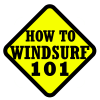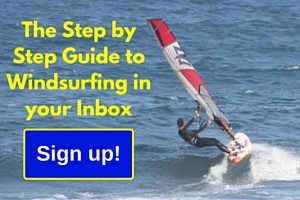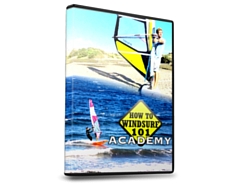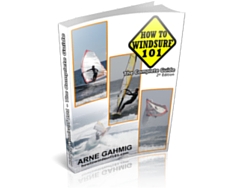My home spot is El Médano. It is where I learned to windsurf and where I have been teaching for the last 9 years on and off. In that time I have seen hundreds of people keen of getting on the water and having a great session suddenly experience a frustrating fight for even getting on the board and sailing for more than 10 meters. I have seen experienced flat water windsurfers take a severe beating and break gear on many occasions. The reason is that they never had to face a shore break, much less such a constant one as here. And it really isn’t all that hard getting through the waves, all you need to know is how.
We need to take into account that regardless of whether you are positioning the board for the beachstart, the waterstart of just plain sailing, the method to get through a breaking wave is the same. The biggest fight that I keep witnessing is to do the beachstart. The reason is that the waves tend to come non-stop, with a space of 1 to 5 seconds between them. Here are the three basic things you need to take into account when going through a shore break wave:
Go through the wave at 90°
This is the biggest factor to take into account when sailing through a wave, broken or just steep. The wave is a mass of water that is moving towards you that will try to push us along with it, and if the board is not perpendicular to the wave, the bow (which is the first point of contact of the wave on the board) will be pushed/dragged along by the wave. The result is a loss of control. If this happens while positioning the board for the beachstart or the waterstart, all our positioning efforts will have been undone. If this happens while sailing, the result is either a way too fast luffing up to the wind, or a very entertaining catapult (at least for all of us watching :))
The faster the better
As mentioned before, the wave has a lot of inertia, meaning that when it hits us, it will try to push us with it. Hitting it at 90° is one part of the equation, however, unless we have some energy of our own to counteract the waves’ energy, it will in fact push us backwards. While handling the board for the beachstart we can lean against the wave with the gear to stop it from pushing us over although pushing the gear into the wave about a meter before impact is more effective. If we have to waterstart in steep/broken waves, pushing towards pushing the board into the wave like with the beachstart can make the difference of having to lay out the gear correctly again or not. When we are sailing, try to pick up some speed between the waves so that you are not at a standstill when the wave hits you. The faster you are going, the less the wave is going to affect you.
Bend your knees on impact
As I mentioned above, the wave will slow us down in some measure. In the same way that if we hit a curb with the bike or get a stone under the wheels of a skateboard, if our weight centre is high up, we will be more likely to fly over forwards. The solution in windsurfing is to bring our upper body lower by bending our knees just before hitting the wave head on.
One more thing:
Another little tip you can implement is make sure you have the weight on the back foot so that the bow comes up a little and the board can go over the wave naturally and not necessarily underneath/through it.
This advice is mainly for the conditions in El Médano where the wind usually comes side-on. With offshore winds, the advice is still pretty much the same with the small additional hint that we must remember to open the sail right after the wave because the difference in height before and after the wave makes the air speed up, which feels like a sudden strong gust normally resulting in a silly twirling fall over the lee side.
I hope this has provided some insight as to why your efforts in waves have been more challenging, exhausting (maybe even frustrating) and that you are now equipped with the knowledge of how to overcome even the bigger whitewash.




